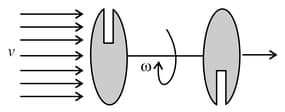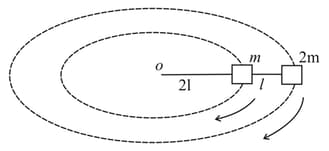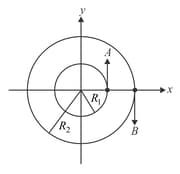A disk shaped coin is tossed up in the air with 'Head' side on the top. The initial centre of mass velocity of the coin is in the vertical direction. In addition, the disk is rotating about the horizontal axis with angular velocity . Assume the motion in air is torque-free. Find the number of completed flips the disk will perform before it hits the ground under the action of gravity.
Important Questions on Motion
A clock has a continuously moving second's hand of length. The average acceleration of the tip of the hand (in units of ) is of the order of :
Two parallel discs are connected by a rigid rod of length centrally. Each disc has a slit oppositely placed as shown in the figure. A beam of neutral atoms is incident on one of the discs axially at different velocities , while the system is rotated at angular speed of, , so that atoms only with a specific velocity emerge at the other end. Calculate the two largest speeds (in meter/second) of the atoms that will emerge at the other end.

Two blocks of masses and connected by a massless string move along concentric horizontal circles on a horizontal frictionless table with as fixed point as shown in the figure. If is the period of motion, the tension in the longer part of the string is (Neglect the dimensions of the blocks when compared with the lengths of the string).

Two particles are moving on two concentric circles of radii and with equal angular speed At their positions and direction of motion are shown in the figure:

The relative velocity at is given by:

